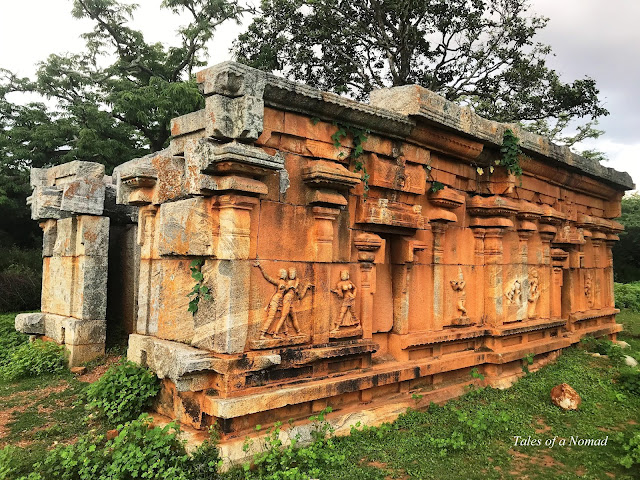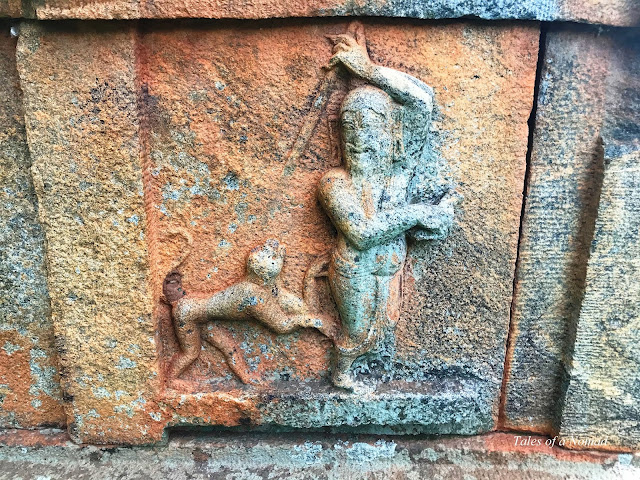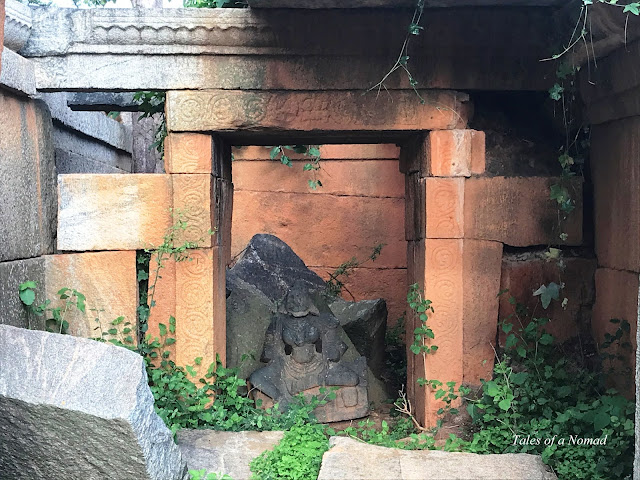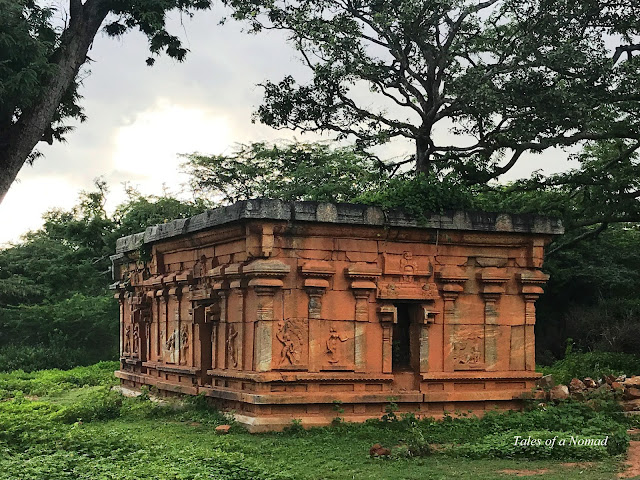Ashok and I rode through the narrow gully that meandered its
way past houses and shrines, which seemed like an endless path, until it came
to an abrupt end. Parking our bike, we headed up a staircase to the rooftop
of one of the numerous blue structures that cluttered the place. From the rooftop we hopped on to the neighbouring hillock. We were in race to witness the setting sun from the sunset
viewpoint with a sea of blue houses in the foreground. Luckily, we were just in the nick of time
to see one of the prettiest frames in Jodhpur, and that was a great start to my
exploration of the Blue City.
The city get its nickname, ‘Blue City of India’ due to the
numerous houses painted with a mix of indigo and limestone, which gives it a
sky-blue colour. My local guide, Ashok mentioned that the houses painted in sky
blue colour belong to the Brahmin community. It’s probably a way to discern
their houses from the rest. Another story reveals that this was done to keep
termites away, which had encroached these houses.
However, much before the city got its tagline, Jodhpur was
the capital of the Marwar kingdom, which ruled a large part of present day
Rajasthan from 13th century A.D. until early 19th century
A.D. From the Delhi Sultanate to the Marathas to the Mughals, the Rathore Kings
of Marwar fought off multiple attacks, sometimes losing out and becoming a
vassal, while at other times, winning and getting back the power. The first
capital of the Marwar dynasty was Mandore, and later in the mid 15th
century, it was shifted to Jodhpur, by the king, Rao Jodha, after whom the city
is named.
While its rich history and stories will leave you
captivated, the city has quite a few interesting places to visit, which will
take you through some of its bygone glorious days.
Mehrangarh Fort

Standing tall and intimidating over a hillock, Mehrangarh
Fort left me gaping at it for long from a distance. This is one of the
magnificent forts in Rajasthan known for its spectacular artworks displaying
the culture and heritage of Marwar Kingdom. Built in mid 15th
century by Rao Jodha, and renovated by the later rulers of Marwar, there are
seven entrance gates that you need to pass through to get to the insides of the
fort. The canon ball marks on the fort walls talks about the numerous wars the
fort had witnessed. The fort houses numerous galleries that display various
items that were once used by the royal family, which includes palanquins,
armoury, elephant howdahs, paintings, costumes and turbans. The numerous
palaces with innumerable windows, extensive artworks, spectacular glassworks
and intricate carvings on its exteriors display magnificent craftsmanship. Some
of the palaces here are Sheesh Mahal, Phool Mahal, Jhanki Mahal, Moti Mahal and
Zenana Mahal. The views of the fort walls and the city of Jodhpur from these
palaces are absolutely captivating.
Jaswant Thada
A short walk away from the fort, Jaswant Thada, a gleaming
marble structure is a cenotaph built in memory of Maharaja Jaswant Singh, one
of the Rathore Kings, who ruled in the late 19th century. The
magnificent structure is adorned with wonderful carvings, pillars, windows and
arches, which are absolutely eye-catchy.
Mandore Gardens
Mandore, which was earlier known as Mandavyapura, was the
first capital of the Mawar Kings, until they made Jodhpur their capital later
in the 15th century. Don’t get beguiled by the sprawling lush greenery,
pathways and the name of this place. What these gardens house are spectacular
cenotaphs built in red sand stone with stunning architecture and intricate
carvings. Rising tall among the greenery around, the cenotaphs dedicated to all the major
kings of Marwar can be found here. Historical facts take a backseat here, as the
cenotaphs, which almost resemble a temple have spellbinding art works on the
pillars and the ceilings. Further ahead, atop a hillock in the backdrop, are
the ruins of a fort and remnants of the old capital.
Kaylana Lake
A placid lake flanked by hills on either side, Kaylana lake
is an ideal break from the innumerable structures, architecture and sculptures,
that Jodhpur is known for. While, there isn’t much one can do here, gazing at
this landscape after a long day of exploration, will be an ideal way to end your day.
Toorji Ka Jhalra
A stepped well built in the mid 18th century;
Toorji Ka Jhalra was built by the then king, Abhay Singh for his queen,
Tanvarji. The well during those days was maintained by women, who also
controlled the water management system across this town. There are more than a
hundred such step wells across Jodhpur, but the 200-foot deep Toorji Ka Jhalra
is the most popular one. Though the carvings on the steps have faded over the
years, the well was once adorned with numerous artworks, which included
intricate carvings, water spouts and much more.
Sunset Viewpoint, Pachetiya Hill
An ideal way to end a day in Jodhpur is by enjoying a sunset
atop Pachetiya Hill. Narrow gullies that meander its way past the blue
houses lead you to the top of this hillock, which also offers a magnificent
aerial view of the city of Jodhpur. The setting sun splashing myriad colours
across the sky with houses in various shades of blue in the foreground is a spectacular
sight. All that you would want to do is gaze in oblivion as the sun slowly goes
down the horizon.
Jalandhar Nathji Ka Mandir
This might a tough one to locate as it is tucked away inside a
school premises in one of the nondescript lanes of the city, and it remains
shut while the school is not functional. Set inside a large courtyard, this
temple is adorned with numerous pillars, which are decked with intricate
carvings and motifs. The artwork across the base of the platform have partly eroded and dilapidated.
Masuriya Hill
This hillock has a statue of Durga Das Rathod atop a horse,
surrounded by a garden. However, what bring people here are the panoramic views
of Jodhpur city and the spectacular sunsets. This is an ideal place to spend a
serene evening away from the crowds, and to enjoy a beautiful sunset.
Sadar Bazaar
Sadar Bazaar might well be a crowded shopping area with
numerous shops selling a wide range of things. However, a major point of
attraction here is the clock tower that intimidates the surrounding shops, and displays influences of colonial architecture.
How to reach Jodhpur:
Jodhpur is well connected to other cities in the country by
flights and trains. The closest major international airport is in Jaipur, 370 km away.
Food and Accommodation:
Being a popular tourist destination, Jodhpur has a wide
range of resorts, hotels and hostels to choose from. I stayed at Hostel Raahi,
which is well recommended. The city also has numerous restaurants, which serve
authentic Rajasthani cuisine.



















































